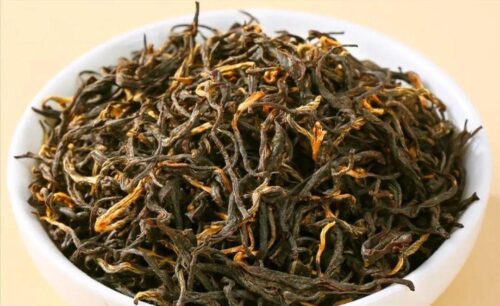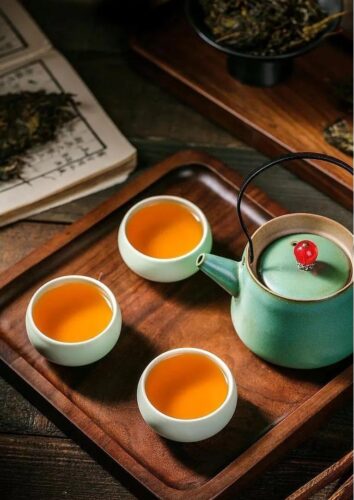5000 years history of Chinese tea
Chinese tea has a history of 5000 years
China is the hometown of tea, after a long historical journey, tea has now taken root in the world, tea has become one of the three popular non-alcoholic beverages in the world. As the birthplace of tea, every Chinese is proud of it.
Today, I would like to share with you a brief history of Chinese tea. As a Chinese who loves tea, I dare to truly understand Chinese tea by knowing this.
The development of tea culture since ancient times
For the Chinese, Chinese tea is not only a kind of drink, but also a symbol of calmness and meditation. After thousands of years, tea has penetrated into every aspect of Chinese life.
1. Shennong Era: 5,000 years ago, the Shennong Era used raw leaves to cook and drink, and used tea leaves for medicinal purposes.
2, Western Zhou, Eastern Zhou: 3000 years ago, began to cultivate tea tree, as a dish.
3, Qin Dynasty: 2300 years ago, began to drink tea, cooking, soup.
4. Han Dynasty:
(Western Han Dynasty)2000 years ago, the commercialization began, and Chengdu became the earliest distribution center of tea in China.
Around 1500 (Eastern Han Dynasty), tea cakes began to be made for transportation.
5. Tang Dynasty: 1200 years ago, influenced by the economy and culture of the Tang Dynasty and advocated by Lu Yu’s Book of Tea, tea drinking culture was prevalent in the Tang Dynasty.
6, Song Dynasty: 1000 years ago, the improvement of tea making techniques, attention to water quality, tea fighting has become a trend.
7. Yuan Dynasty: 700 years ago, loose tea began to appear. Folk tea is mainly loose tea, cake tea is mainly used by the royal court. The method of brewing tea began to appear, that is, brewing tea leaves directly with boiling water. It laid the foundation for the rise of loose tea in Ming Dynasty.
8, Ming Dynasty: 600 years ago, Zhu Yuanzhang waste group to disperse, yellow tea, black tea and flower tea technology has been formed.
9. Qing Dynasty: 300 years ago, Chinese tea swept the world and was the only one in the world tea market. At that time, only China exported tea, and the process was mainly to bake and fry green tea, making oolong tea, black tea, black tea, scented tea, green tea and white tea.
10. Modern times:
· The period from 1846 to 1886 was the prosperous period of tea in China, with the continuous expansion of the area of tea gardens and the rapid increase of tea production, which effectively promoted the development of foreign trade.
·1886-1947 was a period of decline in Chinese tea production, and the political, economic and international tea market competition failed.
· Since 1950, it has been a period of recovery and development of tea production in China. With the support and attention of the government, we have vigorously restored old tea gardens, established new tea gardens, improved new varieties, and carried out scientific tea planting, thus bringing tea economy to the road of stable development.
Utilize the three stages of tea
The ancestors of Chinese people experienced four processes in drinking tea: eating it raw for medicinal purposes, eating it cooked as a dish, cooking and drinking it, brewing and tasting it.
The earliest way of using tea was to chew raw food, and later to cook soup for fire, just as people cook vegetable soup today, people at that time only drank tea as soup, or used tea as a dish to eat.
1, medicinal: the discovery and use of tea can be traced back to the primitive period, China’s first drug monograph “Shennong Herbal”, there is “Shennong tasted hundreds of herbs, the day encountered 72 poisons, tea and solution.” Tea medicinal, raw chewing, internal administration, heat, external application anti-inflammatory detoxification.
2, edible: from raw chewing to cooking, tea can be cooked with food “tea porridge”, “soup print”, or boiled, picked up, and added seasoning. Today, Yunnan Jinuo nationality still has “cold tea dish”.
3, drinking: drinking from eating, from eating to drinking, is out of the pursuit of the original taste of tea. In modern times, there is still the custom of eating tea. In pastoral areas, tea is mixed with milk to drink together. In ethnic minority areas, there are rolling tea and oil tea.
A style in the way we drink Chinese tea
1, the Tang Dynasty tea cooking method
Before boiling the tea, crush the tea leaves, boil the water, add the seasoning, and then sprinkle the tea powder into the pot. When drinking, the tea soup is hot and drunk, which is called “eating tea”.
Tang people once liked to add seasonings to tea soup, such as salt, scallions, ginger or orange peel. In the Middle Tang Dynasty, Lu Yu made tea at least a little more salt to taste, and then Tang people began to advocate the original taste of tea, laying the foundation for the prosperity of tea ceremony.
2. Chinese Tea ordering in Song Dynasty
The way of drinking tea in the Song Dynasty rose to the height of aesthetics and reached the extreme. They decorated the tea cake with a lot of dragon and phoenix patterns, very delicate, called “dragon and phoenix group tea”.
First grind the cake tea into a fine powder and pour some tea with boiling water. In order to blend the tea dust with the water, beat the tea whisk quickly, the tea is fully blended, and a large number of white tea droplets appear in the tea cup. This is where matcha originated in Japan.
Chinese Tea making in Ming Dynasty
In the Ming Dynasty, the methods of making and drinking tea were repeatedly simplified. Zhu Yuanzhang’s strong promotion of loose tea led to the alienation of tea, which used to be only green tea, and then gradually appeared other tea.
People in the Ming Dynasty thought that this drinking method was “simple and unusual, natural interest is well prepared, and it can be described as the true taste of tea.”
The method of tea brewing has also continued to today, making tea without any seasoning, drinking the original and true taste of tea, and the tea sets and methods used for tea making have been simplified a lot, which is more conducive to the spread of tea culture.







